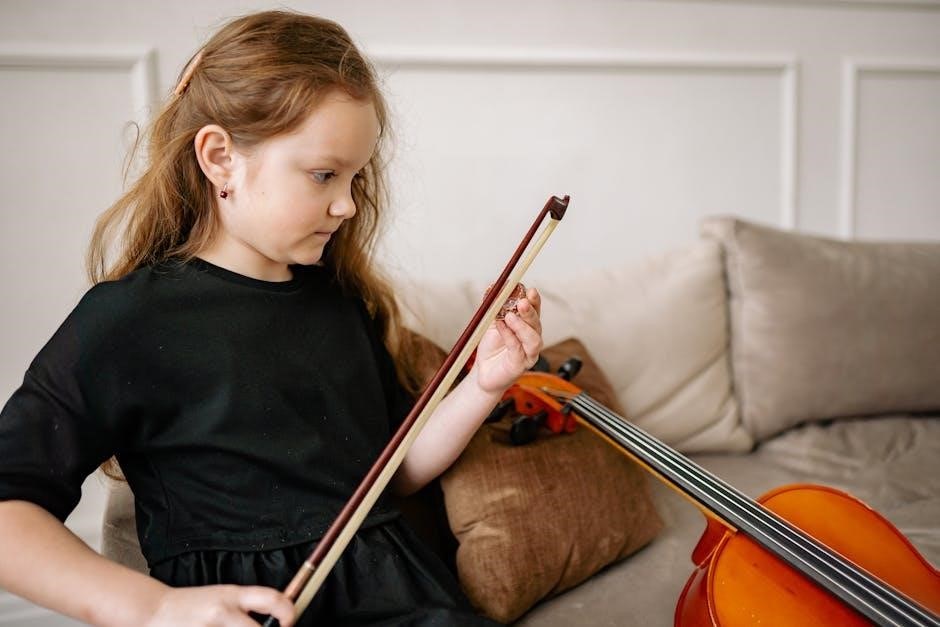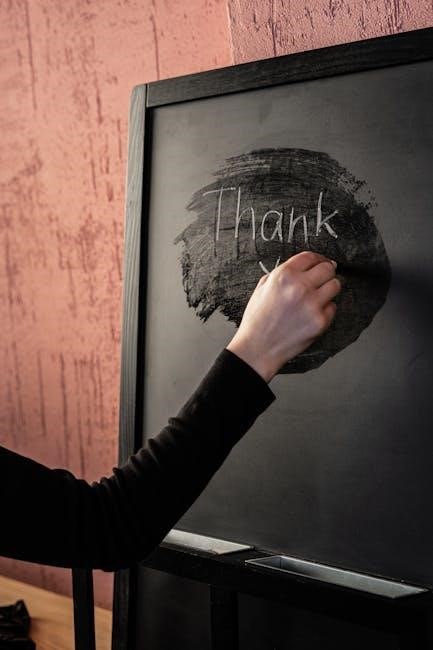Art lesson plans are essential tools for educators, providing structured approaches to teaching creative skills, fostering engagement, and nurturing students’ creativity and critical thinking abilities effectively.
Purpose and Benefits of Art Lesson Plans
Art lesson plans serve as a structured guide, making learning engaging and fun while fostering creativity, critical thinking, and alignment with educational standards.
2.1 Structure and Engagement
Effective art lesson plans provide a clear structure, ensuring engaging and interactive learning experiences. They often include hands-on activities, step-by-step instructions, and multimedia resources like videos. For instance, Blick Art Materials offers PDFs with detailed project guides, while Deep Space Sparkle includes brain-stimulating art activities. These resources cater to various age groups, from kindergarten to high school, ensuring adaptability. By incorporating diverse art forms—such as drawing, painting, and sculpture—lesson plans keep students captivated and eager to explore their creativity. Structured yet flexible, these plans help educators maintain focus while fostering an environment of artistic expression and critical thinking. This balance enhances overall engagement and learning outcomes significantly.
2.2 Creativity and Critical Thinking
Art lesson plans are designed to ignite creativity and enhance critical thinking skills in students. By incorporating activities that challenge students to explore different techniques and mediums, these plans encourage innovative problem-solving. For example, lessons from Blick Art Materials and Deep Space Sparkle often include projects that require students to experiment with colors, textures, and patterns. This fosters a deeper understanding of artistic concepts while allowing students to express their unique perspectives. Additionally, critical thinking is promoted through activities that ask students to analyze and interpret artworks, fostering a connection between creativity and intellectual engagement. These skills are invaluable for students’ overall development and future endeavors.
2.3 Meeting Educational Standards
Art lesson plans are carefully designed to align with educational standards, ensuring students achieve specific learning outcomes. Many resources, such as those from Blick Art Materials and The Arty Teacher, are structured to meet National Standards for Visual Art Education. These plans often include assessments to measure skill development and understanding. For instance, lessons in color theory or art history are tailored to specific grade levels, providing age-appropriate challenges. Subscription-based platforms like IPaintMyMind offer comprehensive PDF plans that integrate with curriculum goals, ensuring educators can deliver high-quality instruction while maintaining alignment with educational benchmarks and fostering student growth in artistic and cognitive skills effectively.
Free Art Lesson Plan Resources
Discover a wealth of free art lesson plan PDFs, including drawing, painting, and art history, available on platforms like Blick Art Materials and Deep Space Sparkle.
3.1 Blick Art Materials
Blick Art Materials offers an extensive collection of free art lesson plans in PDF format, covering a wide range of artistic disciplines such as painting, drawing, and sculpture. These plans are designed for various grade levels, from kindergarten to high school, and include detailed instructions, materials lists, and learning objectives. Many lessons also incorporate art history, making them a comprehensive resource for educators. Videos are included in some plans to further enhance learning experiences. Teachers can easily download these resources, making them a convenient and valuable tool for creating engaging and educational art classes.
3.2 Deep Space Sparkle
Deep Space Sparkle is a trusted resource for visual arts lesson plans, offering engaging and creative activities for students in grades K-6. The website provides free, downloadable PDFs that include step-by-step instructions, making it easy for teachers to implement the lessons. Many plans are accompanied by PowerPoints, enhancing the learning experience. The activities focus on developing critical thinking and artistic skills through hands-on projects. With a variety of themes, from line patterns to mixed-media art, Deep Space Sparkle ensures students stay motivated and inspired. These resources are perfect for educators seeking fun, interactive, and educationally rich art experiences for their classrooms.

Subscription-Based Art Lesson Plans
Subscription-based platforms offer exclusive access to premium art lesson plans, providing educators with efficient tools to meet educational standards and inspire creativity in the classroom effectively.
4.1 The Arty Teacher
The Arty Teacher offers a comprehensive collection of art lesson plans designed for educators. With a subscription, users gain access to hundreds of printable PDF resources, suitable for students aged 5 to 12. These lessons cover various themes, from exploring famous artists to integrating science and history into art projects. The platform emphasizes creativity and critical thinking, providing structured yet flexible plans that cater to different learning environments. Subscribers can download up to 10 resources monthly, making it a cost-effective solution for teachers seeking high-quality, engaging content. The Arty Teacher is a valuable tool for educators aiming to inspire artistic growth and appreciation in their students.
4.2 IPaintMyMind
IPaintMyMind provides a robust collection of art lesson plans in PDF format, designed for K-12 educators. The platform emphasizes representation and efficiency, offering over 30 artists and 21 lesson plans with accompanying worksheets. This resource allows teachers to customize their approach, with over 600 lesson plan options available. By focusing on structured yet flexible plans, IPaintMyMind helps educators save time while delivering engaging content. The lessons are rooted in representation, ensuring diverse and inclusive learning experiences. This resource is ideal for educators seeking to align their curriculum with artistic and educational goals, fostering creativity and critical thinking in their students effectively.

Integrating Art History and Appreciation
Integrating art history and appreciation into lesson plans enriches students’ understanding of cultural and historical contexts, fostering deeper connections with artistic techniques and creative expressions across time.
5.1 Teaching Art History
Teaching art history through structured lesson plans enables students to explore iconic works, movements, and cultural contexts. Resources like the National Gallery offer lessons highlighting American art, showcasing stories of creativity and resilience. These plans often include printable PDFs, videos, and interactive activities, making complex historical concepts engaging. By integrating art history, educators help students connect artistic techniques with historical events, fostering a deeper appreciation for diverse cultures and periods. Hands-on activities, such as timeline projects or style-specific art creation, further enhance learning. These resources are designed to align with educational standards, ensuring a comprehensive understanding of art’s evolution and significance across time.
5.2 Art Appreciation Lesson Plans
Art appreciation lesson plans are designed to help students interpret and value art, fostering a deeper connection to creative expression. Resources like the National Gallery and Art Class Curator offer PDFs and activities that guide students through analyzing masterpieces, understanding artistic styles, and exploring cultural contexts. These plans often include hands-on projects, such as creating personal interpretations of famous works or storytelling through art. By focusing on observation, critique, and reflection, educators empower students to see art as a form of communication and self-expression. These lessons are adaptable, ensuring accessibility for diverse learning environments and fostering lifelong appreciation for the arts.
Customizing and Adapting Plans

Customizing and adapting art lesson plans allows educators to tailor activities to meet diverse student needs, ensuring engagement and effective learning outcomes in various settings.
6.1 Aligning with Curriculum
Aligning art lesson plans with the curriculum ensures a cohesive learning experience, integrating art with other subjects like history, science, and literature. This approach enhances interdisciplinary connections, making learning holistic and engaging. By embedding art activities within broader academic goals, educators can help students see the relevance of art in various contexts. For example, studying artists from different eras aligns with history curricula, while exploring scientific concepts through art fosters a deeper understanding of both subjects. This integration not only enriches the curriculum but also supports students in developing a well-rounded education that values creativity and critical thinking.
6.2 Differentiated Instruction
Differentiated instruction in art lesson plans ensures that all students, regardless of skill level or learning style, can engage effectively. This approach allows teachers to tailor activities to meet individual needs, providing scaffolding for struggling students and challenging advanced learners. For instance, offering varied materials or techniques helps cater to different learning preferences; Additionally, incorporating choice-based projects enables students to explore their interests, fostering creativity and ownership of their learning. By implementing differentiated strategies, educators create an inclusive environment where every student can thrive and express their unique artistic voice, ensuring an equitable and engaging art education experience for all.
